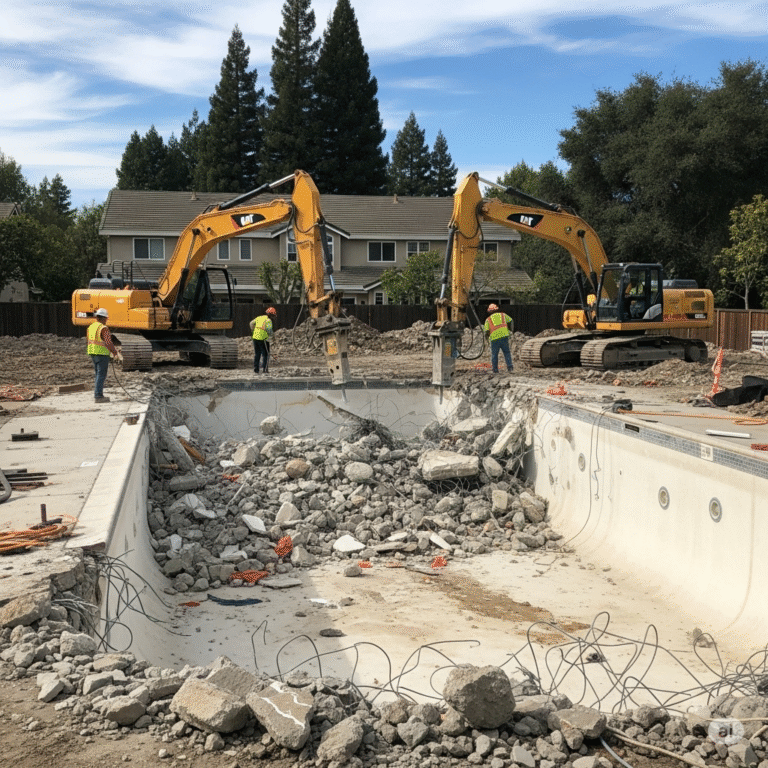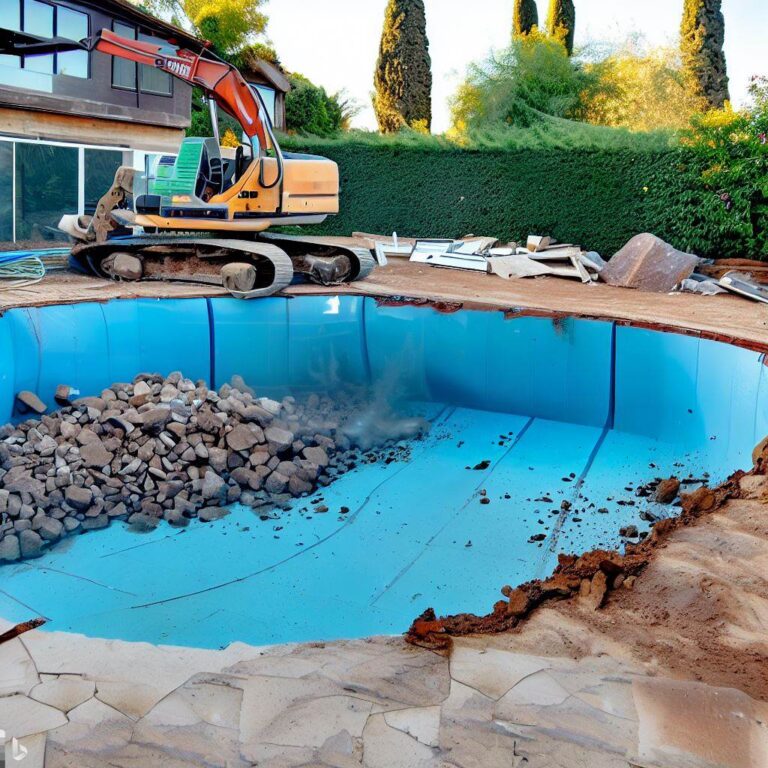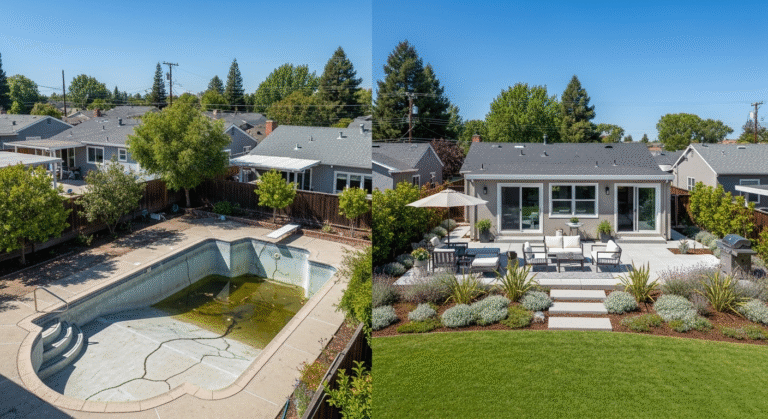Pool Removal Process Explained: A Step-by-Step Guide
Removing a swimming pool from a property is a significant undertaking that requires careful planning and execution. This process varies depending on whether the pool is above ground or inground. Above ground pool removal is generally considered less complex and involves draining the water, dismantling the frame, and restoring the landscape. However, inground pool removal is more intricate as it can be accomplished through either a partial removal and backfill or a full removal process.
In the case of an inground pool, the first step involves draining the water, followed by the demolition of the pool structure. Options for this include a partial removal, where only the top portion of the pool is broken down, or a full removal, where the entire structure is excavated from the ground. The chosen method impacts the cost, time, and future usability of the space.
Regardless of the type, the end goal is to safely remove the pool and rehabilitate the area. This involves the proper disposal of destroyed materials, ensuring the ground is filled and compacted to prevent settling, and preparing the former pool site for landscaping or other uses. A successful swimming pool removal improves the aesthetic of the property and eliminates the maintenance costs associated with an unwanted or aging pool.
Planning Your Pool Removal
Before embarking on a pool removal project, it’s crucial to familiarize oneself with local regulations, evaluate the project’s scope, and consider the associated costs. Careful planning can ensure the process is carried out smoothly by pool removal contractors.
Understanding Regulations and Permits
Local regulations and permits are the first hurdle in the planning process. Pool demolition typically requires a permit from local authorities. This ensures the project adheres to:
- Safety precautions
- Zoning laws
- Environmental concerns
To obtain a Building Permit, a detailed Site Plan may need to be submitted, illustrating the pool’s location and the proposed work area. Researching or consulting with professionals can clarify Permits for Pool Removal specific to your area.
Assessing the Project Scope
Determinating the project’s scope includes selecting between full removal and partial removal. The choice will affect:
- Duration
- Disruption
- Future use of the space
Each Demolition Method entails different processes:
- Full Removal: Entire pool structure is removed.
- Partial Removal: Top portion is removed and bottom is filled in.
Types of pools such as Concrete Pools, Fiberglass Pools, and Vinyl-Lined Pools each require specific techniques and equipment.
Costs and Considerations
Budgeting for pool removal is influenced by numerous factors, including:
- Type of Pool
- Demolition Method
- Accessibility of the site
- Local disposal fees
Cost considerations include:
- Contractor’s labor
- Equipment use
- Hauling and disposal of materials
- Backfill materials
Getting multiple quotes from Experienced Pool Removal Contractors can give a more accurate picture of the Pool Removal Cost. It’s essential to also verify that the contractor has the appropriate Insurance to protect against potential damages during the process.
Remember, while Maintenance of an unused pool can lead to High Maintenance Costs, the Cost of Pool Removal can be a worthwhile investment into your property.
Executing the Pool Removal
Removing a swimming pool involves a series of specific steps, each carefully executed to ensure safety, regulatory compliance, and preparation for future land use. The process generally requires skilled contractors equipped with heavy equipment to handle demolition, debris removal, and land rehabilitation.
The Removal Procedure
The initial phase begins with draining the pool, ensuring that water is removed in a manner that complies with local environmental and sewer regulations. Heavy equipment, such as excavators, is then used to break down the structure. The complexity of this step can differ based on pool types, whether gunite, vinyl, fiberglass, or concrete. A pool demolition contractor then systematically removes the pool materials, such as steel rebar or decking, while being mindful of avoiding damage to any utility cables or septic tanks.
- Demolition sequence:
- Draining: Ensure proper disposal of pool water containing chlorine.
- Breaking Down Structure: Use excavators to dismantle the pool.
- Material Removal: Sort and remove debris.
Handling Materials and Backfilling
After demolition, the site must be cleared of debris. Concrete and other pool materials are either hauled away or, in some cases, broken down for use as backfill. Dirt connections form an integral part as they provide the fill material such as dirt, soil, gravel, or sand necessary for backfilling the void. The compaction process is then undertaken to stabilize the area, utilizing engineered backfill to ensure proper soil compaction and to mitigate any safety concerns.
- Backfilling essentials:
- Materials: Select appropriate fill material.
- Compaction: Ensure soil compaction to avoid future settling.
Final Touches and Landscaping
The last stage involves final grading and landscaping to restore the area. This might include pool-to-deck conversion, the creation of additional yard space, or landscaping that enhances the property’s aesthetics and accessibility. Restored areas can increase real estate value and appeal to potential homebuyers. Contractors must operate carefully, respecting the former pool ownership‘s vision for land use post-removal.
- Landscaping considerations:
- Grading: Prepare the site for its intended use.
- Aesthetics: Select landscaping that aligns with the property’s overall look.







